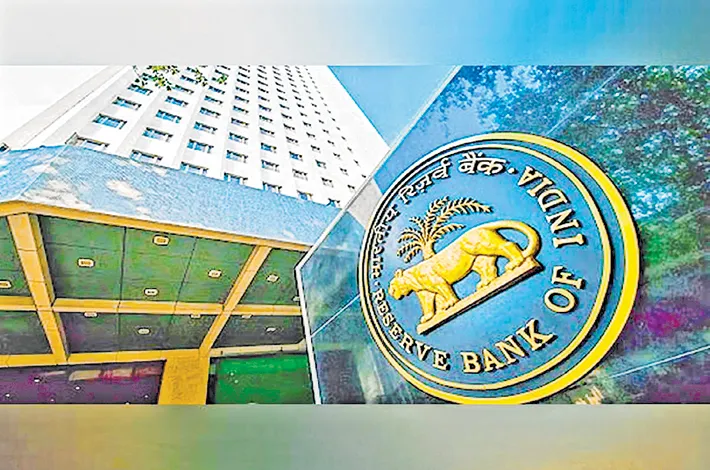Banyan tree a fitting metaphor for PSBs: RBI deputy governor
22-10-2025 12:00:00 AM

Citizens look to PSBs not only for loans and deposits but also for inclusion, stability, security, and progress. We must commit to nurturing this banyan tree so that it remains a symbol of trust and resilience and contributes decisively to the realisation of a Viksit Bharat by 2047
FPJ News Service mumbai
Banyan tree is a fitting metaphor for India’s public sector banks, and a powerful symbol of the domestic banking history, according to Swaminathan J, deputy governor at Reserve Bank of India.
When the State Bank of India was established in 1955, its logo was a sprawling banyan tree. The choice was deliberate, for the banyan has long been revered as the tree of life. Its deep roots embody stability, its sturdy trunk represents resilience, and its wide canopy offers protection to all, the RBI’s October bulletin released on Monday quoted the deputy governor. However, the banyan tree logo was replaced by the now familiar blue circle with a keyhole, designed by the National Institute of Design later. While the banyan conveyed strength and shade, it also drew criticism for casting such a dense canopy that little else could grow beneath it, which seemed at odds with the image of a modern and accessible bank.
“Today, for the PSBs, the task is not only to provide shade and shelter to millions of households and enterprises but also to ensure that beneath their canopy, new growth flourishes in the form of abundant and affordable credit to MSMEs, start-ups, women entrepreneurs, and rural enterprises.
In that spirit, Swaminathan said, “I find the banyan tree still a fitting metaphor for our PSBs. Its roots, trunk, aerial roots, branches, and canopy together capture the five pillars on which PSBs can build their future. These five pillars in today’s context are strong governance, financial resilience, innovation and adaptability, people and culture, and an all-inclusive customer-centricity.”
The banyan tree can survive storms because of its deep roots. They may not be visible, but they are the true source of its longevity and stability. For banks, these roots are strong governance and assurance. It means boards that are engaged, leadership that is accountable, and decisions that are transparent and ethical. “Regulation can guide, but governance must come from within. Supervisory intervention can fix, but it cannot substitute for an internal culture of integrity,” the deputy governor emphasized.
The assurance functions, including risk management, compliance and internal audit, give depth and resilience to governance. They provide boards with independent and reliable perspectives, helping them act with foresight rather than hindsight.
Governance, he said, must also evolve with changing times. Boards need sharper tools, such as real-time insights that flag emerging risks or customer concerns. As banks adopt artificial intelligence and data driven systems, assurance must also extend to these new domains.
Ensuring fairness, transparency, and accountability in automated decisions is becoming as important as monitoring credit or operational risk.
In villages, it is under the banyan tree that people gather to seek counsel, to deliberate, and to find shade in times of need. Citizens look to PSBs not only for loans and deposits but also for inclusion, stability, security, and progress. We must commit to nurturing this banyan tree so that it remains a symbol of trust and resilience and contributes decisively to the realisation of a Viksit Bharat by 2047, Swaminathan pointed out.
“Deep roots allow a tree not only to survive but also to nurture new growth. In the same way, strong governance supported by robust assurance will allow banks to take on fresh initiatives with confidence, knowing that these are built on a stable foundation of trust.”
The trunk of the banyan tree stands tall and sturdy, holding the entire tree together through calm and storm. For our banks, the trunk is financial strength and resilience. Over the past decade, PSBs have strengthened their capital position and improved asset quality. These gains must now be protected and deepened.
“Banks should hold forward looking capital buffers that reflect their risk profile and growth ambitions rather than simply complying with regulatory floors. Asset quality must also be managed with a preventive mindset, using early warning systems and predictive analytics to identify stress before it becomes a crisis.
True resilience today goes beyond capital and credit. It also means operational resilience. With customers relying on banks for 24x7 digital access, even short disruptions can erode trust and create systemic impact. Banks must therefore strengthen their technology infrastructure, cyber safeguards, vendor oversight, and business continuity planning so that services remain secure and uninterrupted under every circumstance.
A strong trunk allows the tree to support new branches and new growth. For PSBs, resilience both financial and operational is what will allow them to expand and support India’s development priorities with confidence. The banyan tree constantly sends down aerial roots, which in time become fresh pillars of support. For our banks, these aerial roots are innovation and adaptability. In today’s financial landscape, technology is no longer optional. Modernising core IT systems and adopting advanced analytics are essential to remain competitive. AI/ML can strengthen fraud detection, improve credit assessment, and personalise customer engagement.
For banks, branches and leaves represent employees who bring strategy to life through everyday actions. A large, committed workforce remains the most valuable asset of PSBs, even in an age of artificial intelligence. No algorithm can replace trust, empathy, and human judgment. To keep the branches strong,
Investment in human capital is vital. Staff must be equipped with new skills in digital banking, cybersecurity, and analytics. Training should be practical and engaging, including simulation-based learning. Equally important is staff attitude and culture. Every customer should feel respected, not merely processed or attended to. True service comes from an empathetic customer first approach. PSBs must therefore nurture a culture of professionalism, empathy, and accountability so that their people remain the strongest ambassadors of trust.








